
Free mobile data in Saudi Arabia and beyond... Click here
Red Sea project in Saudi Arabia
With white sand beaches, colorful coral reefs, stargazing in the desert and retreats in the mountains, Red Sea Global in Saudi Arabia becomes barefoot tourism, but for affluent nature and culture lovers as well as active travelers who appreciate luxury.
Lovers of megaprojects flock to the shores of the Red Sea are in for a treat. Here, no less than three locations are working on the Saudi Arabia of the future: a more diverse, sustainable and outward-looking Saudi Arabia.
Diverse the projects certainly are. Where the northern NEOM is becoming a state-of-the-art City of the Future, its AMAALA and Red Sea Global are targeting (foreign) tourists. AMAALA hopes to appease the world's wealthiest. Red Sea Global will also be a luxury destination, but for nature and culture lovers as well as active travelers.
The setting already makes one curious, as a virgin two hundred-kilometer stretch of coastline was chosen for this, with an archipelago of more than 90 pristine islands in the Red Sea and a rugged interior with dormant volcanoes, desert dunes and mountain canyons. The total area for Red Sea Global covers 28,000 km² and it has been labeled the fourth largest barrier reef in the world with 314 different species of coral and 280 species of fish. The destination is also home to numerous historical and cultural sites.
The Red Sea can be visited year-round with an average temperature of 32°C, and the cooler season lasts from mid-November through March. On the islands, the average daytime temperature is between 24 and 27°C, in the mountains 12°C and in the desert 18°C. Here read more about the best travel time and climate in Saudi Arabia.
Red Sea Global is located 1.5 hours flight from Riyadh, 3 hours drive from AlUla and 500 km north of Djedda.

Red Sea Global, coral reefs and world heritage site
As in AMAALA, tourism and nature conservation must go hand in hand in Red Sea Global. For example, no wastewater is discharged into the sea, no single-use plastics are used, and the resorts must operate completely climate-neutral. The goal is not just sustainable tourism, but regenerative tourism: not preserving the destination as it is, but making it better.
That means not only protecting the fragile coral off the coast, but actively raising endangered plant species to enhance wildlife. Yet questions remain about a project of this magnitude. Already, the country uses four times more water than it is capable of replenishing naturally itself. The resorts will use more than 56,000 square meters of water per day.
In any case, less than 1% of the entire area will be developed and 75% of the islands will remain untouched. Nine islands are protected natural areas, as the Red Sea is home to numerous vulnerable animals and plants, including 175 species of coral, 195 species of fish and dugongs, or Indian manatees. Their protection is to be boosted by the revenue generated by Red Sea Global. Visitor numbers are limited to 1 million per year.
Further inland from the resorts, the Nabataeans lived. Here you will walk in the footsteps of ancient traders, explore ancient petroglyphs in the desert, visit the World Heritage Site of Hegra and the lava field of Harrat Lunayyir.
Divers will soon be able to explore an 18th-century shipwreck that is currently the most intact and best-preserved wooden shipwreck in the Red Sea. The site flaunts a spectacular cargo of pots, porcelain and spices, a testament to the history of trading activities in the region. The relatively large size of the ship suggests it could have reached as far as China and India to bring back goods ultimately destined for the Ottoman Empire and Europe.

Red Sea International Airport (RSI)
Red Sea International Airport (RSI) in Saudi Arabia is set to fully open by the end of 2025, with the main terminal nearly operational and featuring a system that allows travelers to leave the airport in as little as six minutes. The terminal has integrated immigration, security checks and gates into one efficient zone - crucial for fast throughput. RSI, which runs entirely on solar power, will soon be able to handle one million visitors a year. With a desert-inspired design by Foster + Partners, RSI is located at the crossroads of Europe, Asia and Africa, making it easily accessible to visitors from all corners of the world. The design makes use of shade and natural ventilation, minimizing the need for air conditioning.
RSI is the ideal base for visiting St. Regis Red Sea, Shebara or any of the other hotels. If you are visiting one of these island resorts, you can use hybrid seaplanes from the FlyRedSea fleet. There are already plans to switch to eVTOLs (electric vertical aircraft) for transfers between the airport and the resorts.
Fly Red Sea
RSG also celebrated the launch of the first seaplane flight operated by its subsidiary, Fly Red Sea. These flights are designed to transport guests over crystal clear waters to Red Sea island resorts, including the St. Regis Red Sea Resort and Nujuma, A Ritz Carlton Reserve. It is the first seaplane company launched in the kingdom.
Fly Red Sea's original fleet consists of four Cessna Caravan 208 seaplanes, each equipped with luxurious interiors. Each plane can accommodate a pilot and up to six guests with luggage for transfers to water-based resorts, and is also available for up to nine guests for scenic tours of the Red Sea.
Remaining true to its commitment to sustainable operations, RSG has chosen to run its fleet of seaplanes on SAF (Sustainable Aviation Fuel) from day one. It is also exploring the possibility of all-electric seaplanes and is working closely with ZeroAvia to convert Cessna Caravan Seaplanes with hydrogen-electric propulsion technology.

Barefoot tourism with a price tag
All this beauty does come with a price tag. As with AMAALA, wealthy tourists are clearly being targeted here. With its white sand beaches, colorful coral reefs, stargazing in the desert and retreats in the mountains, this will be barefoot tourism, but primarily for neatly groomed bare feet with stylishly painted nails.
Red Sea Global has already opened five luxury resorts as part of the first phase of The Red Sea destination. These include: Shebara Resort, Desert Rock Resort, Nujuma, a Ritz-Carlton Reserve, The St. Regis Red Sea Resort and Six Senses Southern Dunes, The Red Sea. The first phase of the project will eventually include 16 resorts.
The Red Sea is a key part of Red Sea Global's portfolio, which also includes AMAALA and Thuwal Private Retreat. In total, The Red Sea destination is expected to have 50 hotels with 8,000 rooms by 2030.
The hotels
Southern Dunes
Just a 45-minute drive from Red Sea International Airport is Six Senses Southern Dunes, a resort with 36 rooms and suites (10 different categories) and 40 villas with private pools. The resort's features include: three restaurants, a cooking school, a patisserie, an outdoor cinema, an herb garden, an outdoor pool and, of course, a beautiful Six Senses Spa. The resort is located in an area characterized by: volcanic craters, vast desert dunes and archaeological gems. The heart of the resort is the Oasis. Inspired by a desert flower, the canopy is a self-shading structure that houses vibrant activities and functions.
Characteristics:
- Designed by British architects Foster + Partners
- The first Six Senses in Saudi Arabia
- Honors Nabatean heritage indigenous to the Red Sea coastline
- Already opened - Ask here a free quote
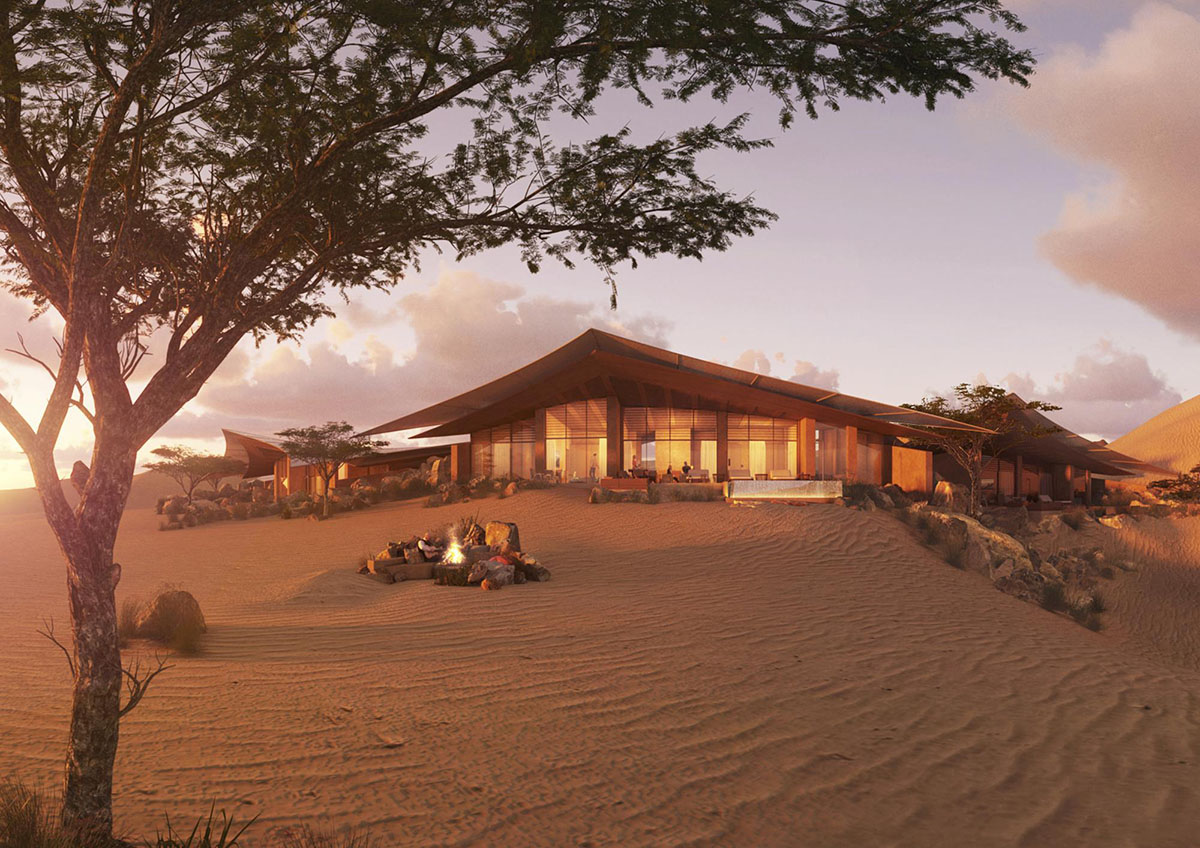
Ummahat Island
Two pristine islands accessible by a 20-minute drive followed by a 35-minute boat ride or by a 20-minute seaplane flight. The Ummahat Islands will be home to Nujuma, a Ritz Carlton Reserve and St. Regis Red Sea Resort.
Characteristics Nujuma (stars in Arabic):
The resort is dedicated to underwater exploration with a state-of-the-art dive center that will offer everything from deep-sea diving to cultural heritage to snorkeling at the island's outer reef. The complex, one of only six Ritz-Carlton Reserves worldwide, will include 63 waterfront and beachfront villas, an island spa and a conservation center dedicated to the culture and history of Saudi Arabia.
- A luxury resort with 63 villas (on the water and beach)
- 4 different restaurants
- Focused on human connection
- Already opened - Ask here a free quote
Features of the St. Regis Red Sea Resort:
The design was conceived by Japanese architect Kengo Kuma, whose goal was to preserve the island's precious natural habitat. He chose a ring of waterfront and beachfront villas to minimize the ecological footprint.
The St Regis Red Sea Resort will consist of 90 one- to four-bedroom villas on the beach and over the water and is accessible only by chartered boat or seaplane. Each villa will have a private pool, sun terrace and butler service. Taking advantage of the surrounding open water and the sea it inspires, the resort offers sailing, windsurfing and kayaking through nearby mangrove forests. Moreover, you can get your PADI certifications or participate in diving expeditions to explore nearby wrecks, including the famous Blue Hole - a natural sea cave located close to the resort. There will also be two swimming pools, a spa and four restaurants, including dining options with sophisticated cuisine.
- A luxurious resort with 90 villas
- Located in the Al Wajh lagoon
- Designed by Japanese architects Kengo Kuma & Associates
- Offers avant-garde style and customized service
- Already opened - Ask here a free quote
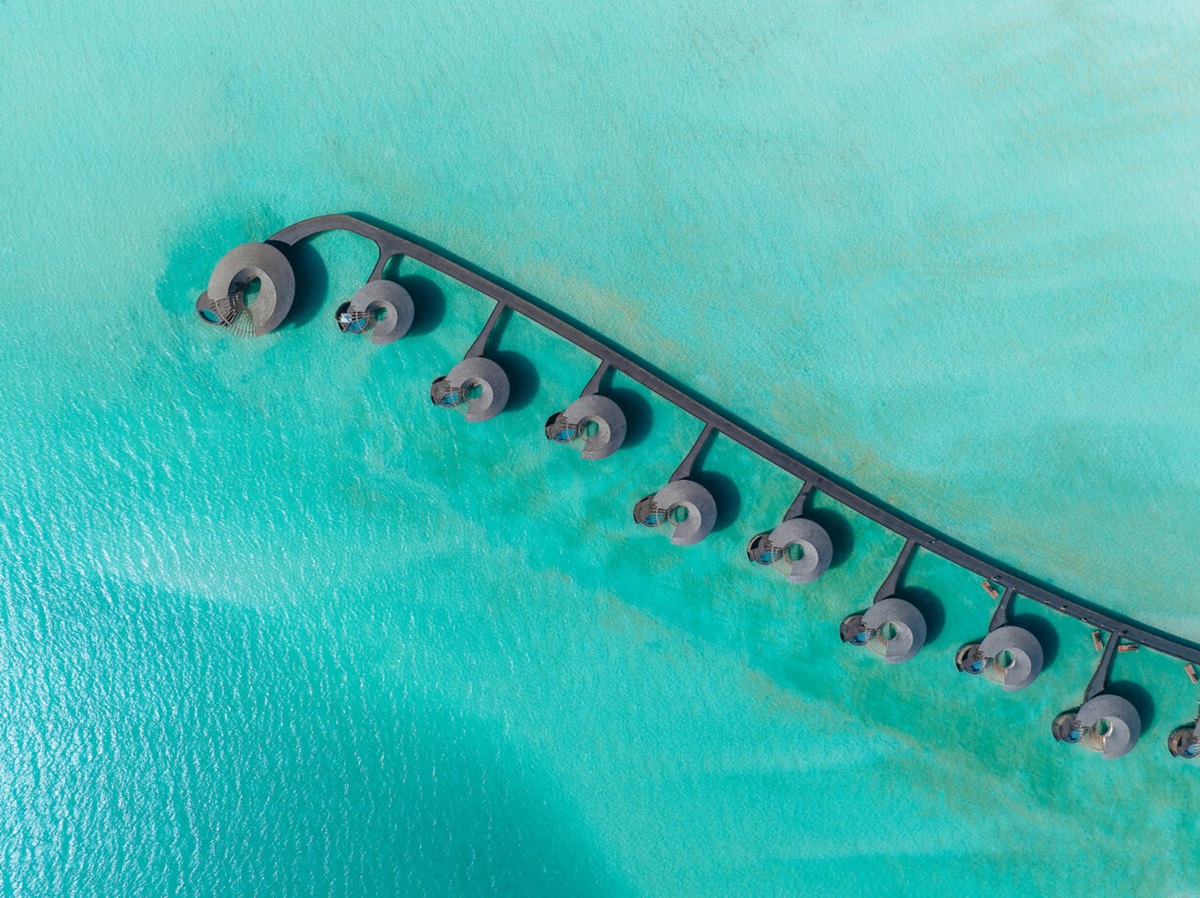
Shura Island
Shura is inspired by the natural state of the island, with the hotels designed to give the impression of having washed up on the beaches and nestled among the dunes like driftwood. The island is shaped like a dolphin. Because of the nearby coral reefs that flourish, also called "Coral Bloom," Shura Island will accommodate 11 luxury, lifestyle and premium resorts:
Fairmont - 193 rooms | Edition - 240 rooms | Grand Hyatt - 430 rooms | Intercontinental - 210 rooms | Faena - 150 rooms | Jumeirah - 159 rooms | Rosewood - 187 rooms | Mirival - 180 rooms | SLS - 150 rooms | Raffles - 168 rooms | Four Seasons - 180 rooms.
Characteristics:
- A 60-minute drive from RSI airport, including crossing the Shura Bridge (longest bridge in Saudi Arabia)
- A marina with athletics for children and a beach club
- Luxury shopping, dining and entertainment area
- An 18-hole golf course
- A dive center
- Opening in the 2nd half of 2025
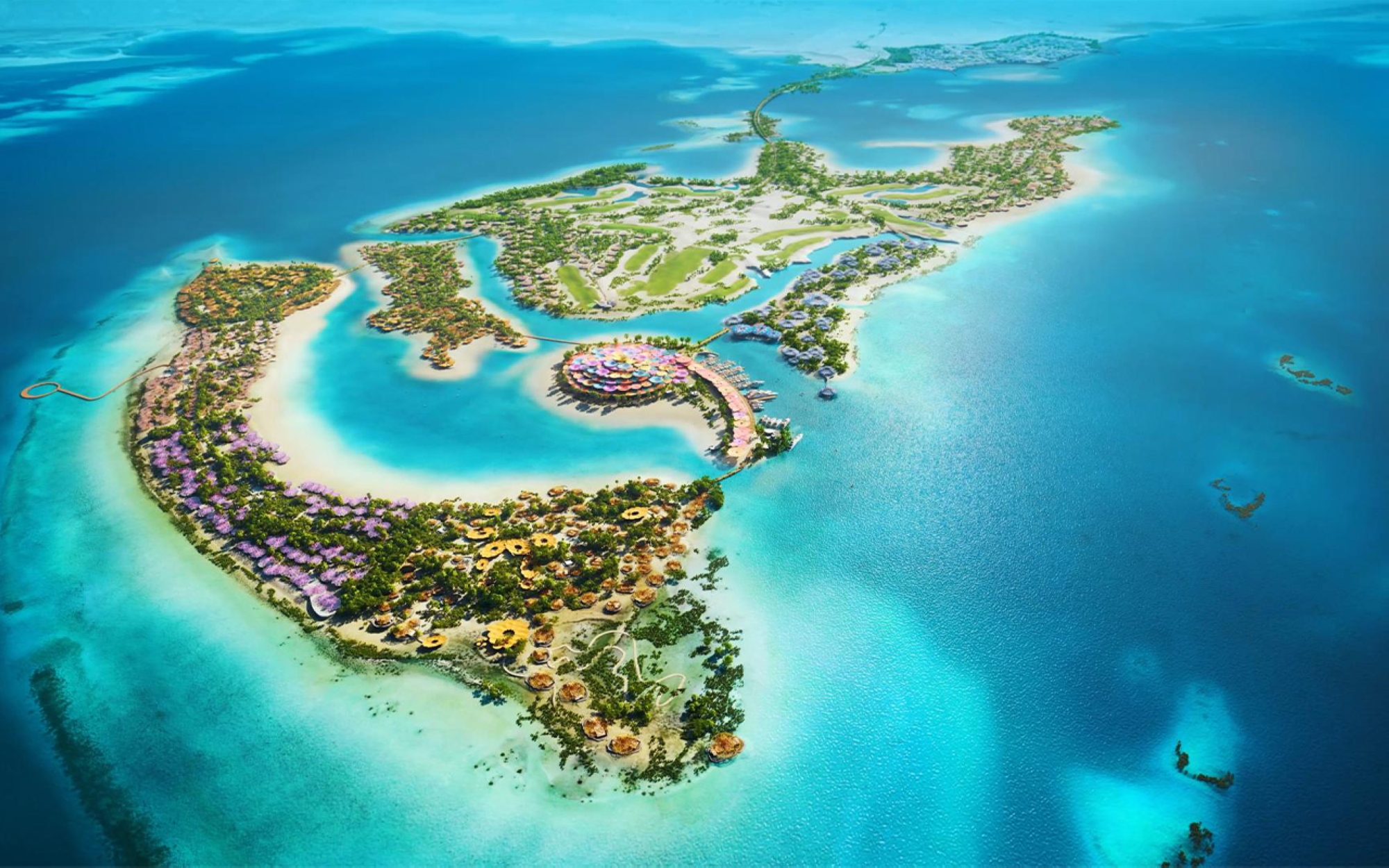
Shebara Island
The farthest island from the mainland (30 minutes by car and 35 minutes by boat or 20 minutes by plane), has a spectacular coral reef just off the coast. Shebara with 73 rooms consists of villas on land and on the water (38).
Characteristics:
- Designed by award-winning architects at Killa Design in Dubai
- The waterfront villas are inspired by the natural environment, particularly coral, and are made of polished steel to reflect the water, sky and reef
- Land-based villas are inspired by sand dunes
- Already opened - Ask here a free quote
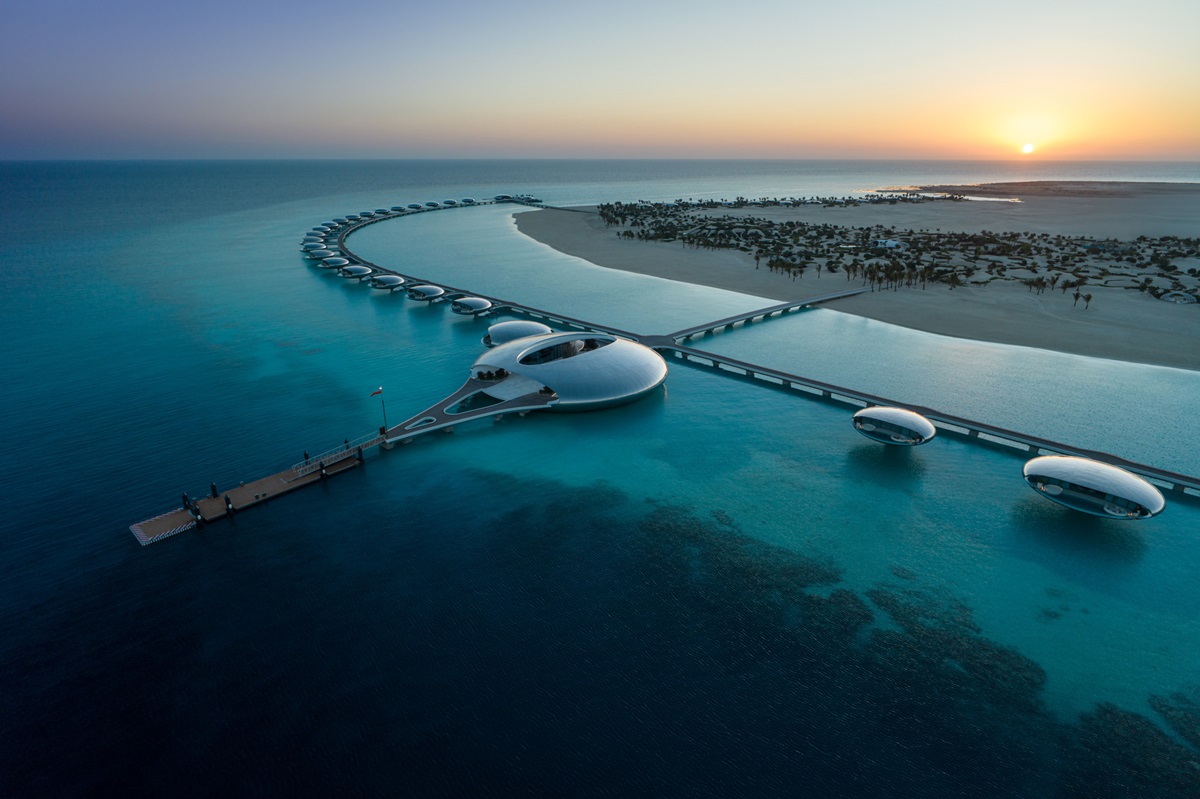
Desert Rock
Among imposing, rugged mountains 20 minutes from RSI airport, integrates Desert Rock architecture with nature. This 64-room hotel (10 of which are literally in the rock massif itself) is built in the beautiful mountain landscape of Saudi Arabia.
Characteristics:
- Designed by Oppenheim Architecture
- A range of ground-floor hotel rooms to rooms in crevices halfway up the mountain and a select number of carved rooms in the rock massif itself
- Guests will enter the resort through a hidden valley between the mountains and experience uninterrupted views
- Already opened - Ask here a free quote
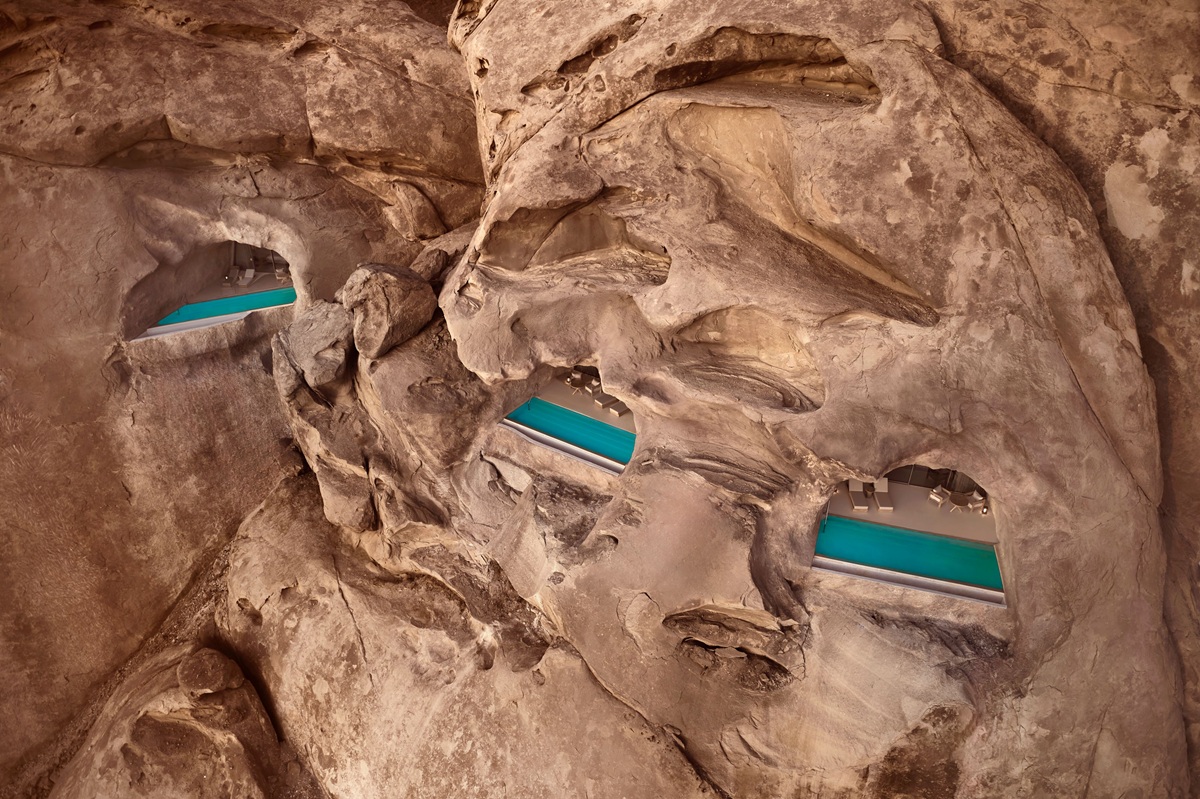
More inspiration
Get inspired and be informed before visiting Saudi Arabia




